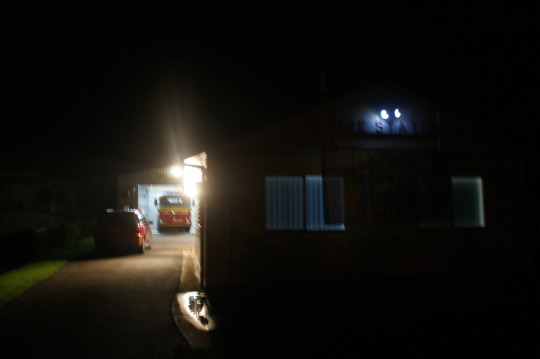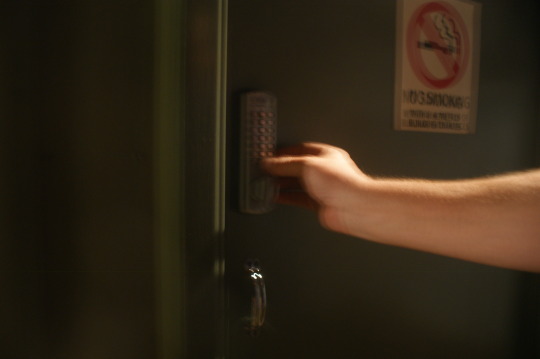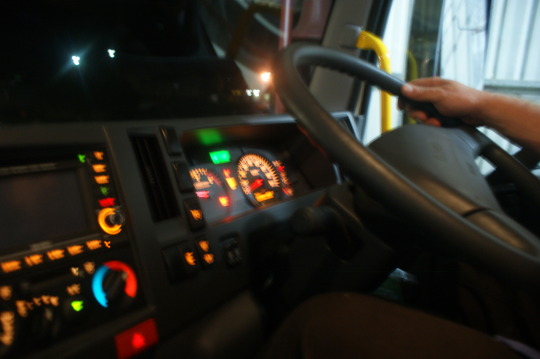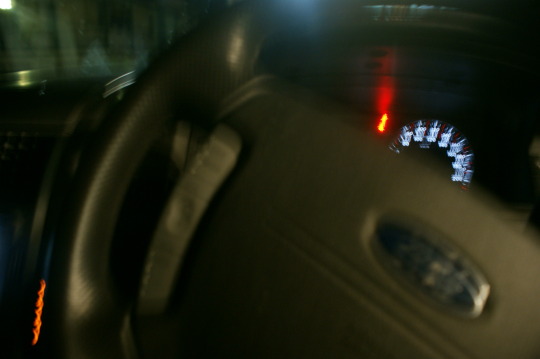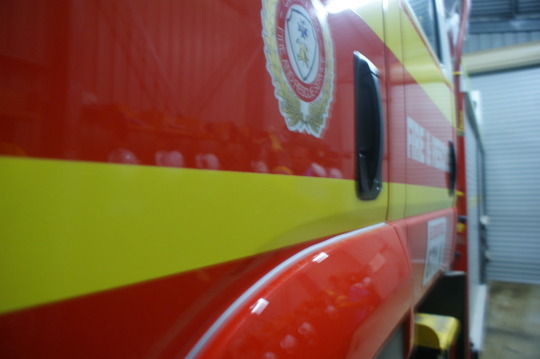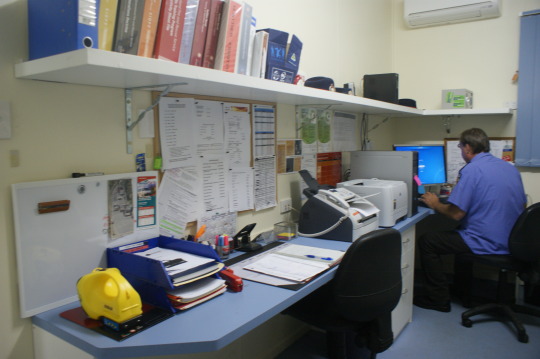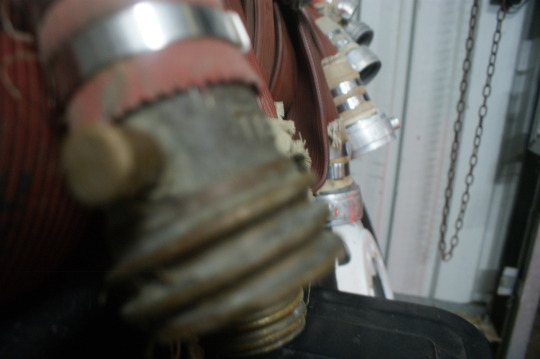Text
My internship experience
When I initially considering enrolling in the journalism internship over the summer I had assumed that it would be a work placement at a newspaper or another media outlet. After attending the information session however I had the understanding that it would instead be a university project that I would be working on.
My involvement with the Pongamia Project was both what I expected and not what I had expected the internship to be about. At first I thought I was really going to struggle with working on the project and getting the required hours as I had assumed that my role was to be solely focused on the social media side of the project. After working with my supervisor Sharon however, I discovered that I had a lot more freedom in my role and was able to do longer written pieces. This was definitely an aspect of the project that I thoroughly enjoyed. As I had expected to work solely on the social media side of the project I really enjoyed the other opportunities that I was presented with as a part of the project.
I believe that the internship changed the way that I look at my degree and my role as journalist. This is honestly the best part of the internship. Instead of seeing my role as a journalist as only in a newsroom I can now see how many more options are available. The internship presented me not only with the opportunity to be a journalist at the Australian Science Communicators conference but the Pongamia side of the placement opened my eyes to a whole range of things which one can do as a professional communicator. Social media was a major aspect that I had not previously considering as being a part of my future career but now after working on the Pongamia Project I can see the importance of being skilled in social media.
I would not say that there was a ‘worst’ part of my internship as such however I did find my role confusing at times. This was quickly rectified however after talking to Sharon who was able to give me a better understanding of what I was meant to be doing. The internship has taught me a lot not just about my role as journalist but also allowed me to test my abilities. Both the work on the Pongamia Project and the Australian Science Communicators conference tested my ability to understand and to write about topics, which I do not normally write or even read about everyday. The conference also provided me with an insight into all of the different avenues of communication that are out there and how all of these communicators work together.
I would definitely rate my internship as a highly positive experience. I was able to learn a lot that I do not believe I would of learnt in a normal newsroom environment. It would have been great to intern at a newspaper or similar but I know that I am able to do that at any point in my degree so it was great to have a unique and different experience. I would rate my internship an eight out of ten and would recommend an internship similar to mine to others as I believe that it was able to teach me not just but give me a much broader communication experience.
The project helped me to gain a lot of knowledge and understanding about working on social media, which I believe is a very important skill to possess in the changing media market. News today is not delivered in the same way that it was five or ten years ago. There is now a greater reliance by the public on social media as a source for accessing information so its good to know that I have some experience in the area which I will be likely to use in my future career.
Sharon Samuel, the project supervisor was extremely supportive. Over the course of the project we met once a week and I was constantly in contact with Sharon over email where she offered me feedback on my work and ideas that I could use for other work. I was definitely made to feel a part of the Pongamia Project and trusted enough to work independently with my ideas between meetings with Sharon.
As a journalist I have always aspired to work in print media however I now see a future in other avenues of journalism and communication. I had never considered social media and the role that it may play in my career and after working on the Pongamia Project I feel as though that is a skill that I hope to continue to work on as I believe it will be helpful in getting a job in the industry. After working on the Pongamia Project I would also now consider a career in forms of professional communication other than journalism.
1 note
·
View note
Text
Social Media experience
You can view my social media experience by visiting the Pongamia Project's Facebook page as well as the Harrisville Lions Miss Personality Facebook page.

1 note
·
View note
Text
Dear Australia
Dear Australia,
As Australians we seem to have the attitude that ‘if it ain’t broke then don’t fix it.’ The funny thing is most of us do fix things before they break, we have our cars serviced to keep them running well, our hair cut or coloured before we end up with hair like Brittney Spears and vaccinate ourselves against diseases so we do not find ourselves out of action. Why aren’t we doing the same for the environment then? It is the only one you and I have and it’s the same one that we have to pass onto our children, grandchildren and great-grandchildren. Would you be happy for them to inherit a jewellery box full of broken pieces of your favourite one of a kind jewels or would you prefer they were left with a jewellery box full of maintained and fixed one of a kind jewellery you have treasured your whole life? I know what I would prefer to leave. We are in the same situation with the environment.
We can say ‘if it ain’t broke then don’t fix it’ all that we like but the reality is what do we want to happen before we say the environment is ‘broken’? People are already dying from heatwaves across the nation, cattle are starving and having to be shot in drought-ravished regions of Australia which already do not see enough rainfall and we already have more hot days then we did fifty years ago. Unlike the jewellery, which you will have to take to a jeweller to be fixed, you can start to help make sure that future generation will be left with an environment that has been treasured instead of neglected.
One of the most amazing things that I have done is scuba dive in the Great Barrier Reef. The colours are amazing and the sea life that you see is spectacular. While coral cover has decreased in the last fifty years if we act now we can still leave future Australians their very own wonder of the world. We can also leave them with fewer heat waves and ensure that the future farmers who will feed our nation will not have to struggle with drier conditions than those in places like Charleville, Longreach and Bourke have experienced in recent times. If you want to leave the treasured environment to future generations then as many politicians have said in their campaigns, it’s time for change.
For most of us making that change is not complicated. It is all about reducing our greenhouse gas emissions and supporting climate change science not just burying our head in the sand over it because it seems to hard to fix or seems like something that does not impact. Change can be as simple as trying to limit the amount of fossil fuels that you burn, recycling, not using the dryer unless you have to, car pool, walking if you can and supporting local produce to reduce the foods carbon footprint. One of the biggest things you can do however is to lend your voice and give your support to projects and companies that are working towards to creating cleaner energies. These are the way of the future. We cannot continue to burn fossil fuels and releasing carbon dioxide into our atmosphere. If this trend continues to increase you can be sure that the world we leave to the next generation will not be like the one, which we inherited.
You may not think the environment is ‘broken’ right now but it is time that we start to work together to fix it.
From,
A concerned Australian
0 notes
Text
SES training turns into search for missing men

Three men were reported missing to the SES by caravan park management at 3pm. The men who were fishing had not returned to their campsite or made contact with their family after they had phoned an hour and a half earlier to let them know that they were broken down.
Crew on board two SES flood boats found the men’s boat anchored to shore at 3.15pm and searched the surrounding area on foot for the three men. An SES crew later found the men safe and at the entrance of the caravan park after they had walked back from their abandoned boat.
One of the men, Geoff Peters said that they had been having trouble with boat over the weekend but thought that they had fixed it. They had been fishing and the according to Mr Peters ‘the young fella had got a couple of bass’ before the boat broke down. He said the engine problems were caused by a ‘leak in the fuel line.’
The SES towed the boat back to shore and where the men from New South Wales and the Gold Coast were grateful for the help of the SES and gave them a $50 donation.
Members from the Boonah, Aratula and Harrisville/Kalbar SES as well as crews from Beaudesert and Tamborine Mountain participated in the flood boat training day. Members were drilled in the operating procedures of the flood boats and carried out a series of simulated rescues to ensure they know what to do in the event of flood or other water based emergency.
0 notes
Text
Driving the world one legume at a time

Diesel made from the oil of Pongamia Pinnata legumes is one such second-generation bio-fuel being considered. Second generation bio-fuels differ from first-generation bio-fuels such as ethanol that are produced from food crops including corn, wheat and sugar. Not only do first generation fuels ignite the food versus fuel debate but they have also caused debate over whether or not they help to reduce greenhouse gases. Pongamia Pinnata on the other hand does not compete with food stocks and prime agricultural land and actually helps to reduce greenhouse gases. So what is Pongamia Pinnata then?
Pongamia Pinnata (also known as Millettia pinnata) has traditionally had a variety of uses from making soap and fuelling oil lamps to traditional medicine. In recent years however scientists have begun to look at the use of oil from the Pongamia tree as a source of bio-diesel and jet fuel. Currently Australia uses 18 billion litres of diesel annually to run trucks, buses, machinery and other vehicles, which have diesel engines. According to the Centre of Excellence for Integrative Legume Research at the University of Queensland to produce sufficient pongamia pinnata bio-diesel Australia needs 7000 square kilometre of land for Pongamia plantations. While 7000 square kilometres of land may seem hard to imagine, when the average block of land for sale in Australia is between 200 and 350 square metres, Australia currently has between one and two million square kilometres of marginal land on which plantations could be established.
Pongamia Pinnata plantations also have the potential to rejuvenate this marginal land and bring economic security to these regions as well. There are hopes of establishing a program in the Cape York to work with the local indigenous community to establish a plantation that will not only provide a use for the marginal land but also provide employment to the local indigenous community. The Cape York region itself produces large amounts of carbon dioxide due to the diesel generators used to power the region. Not only would a Pongamia Pinnata plantation be good for the people and the land, but it would also be beneficial for the environment.
The use of Pongamia Pinnata biodiesel would obviously reduce the need for fossil fuel use but it also eliminates the need for harmful nitrogen fertilisers that are often required with other biofuel options.
While the benefits of Pongamia Pinnata over fossil fuels and other bio-fuels sound almost to good to be true, you wont see trucks filling up at the bowsers with Pongamia biodiesel just yet. There are several plantations already in Australia so it might not be long before this little legume is fuelling diesel engines across the nation.
Photo courtesy of The Pongamia Project
0 notes
Photo
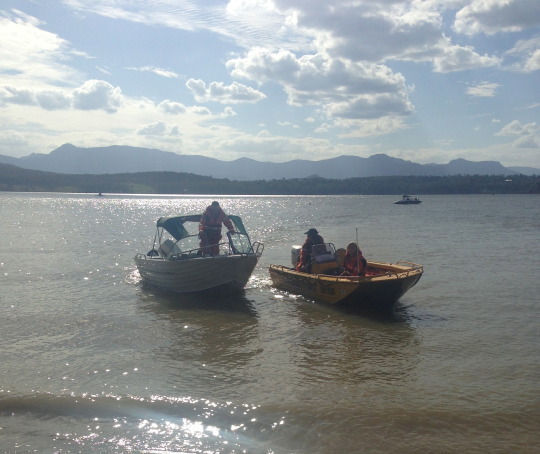

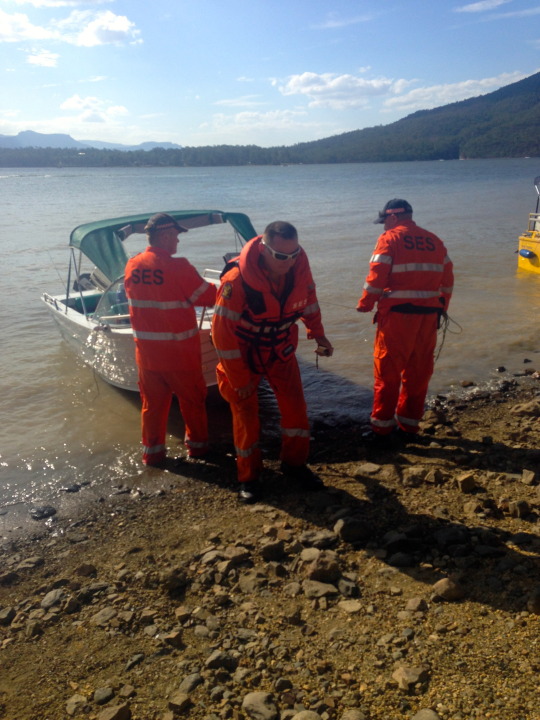
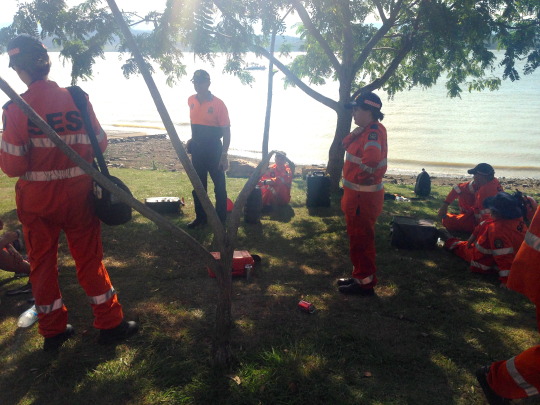

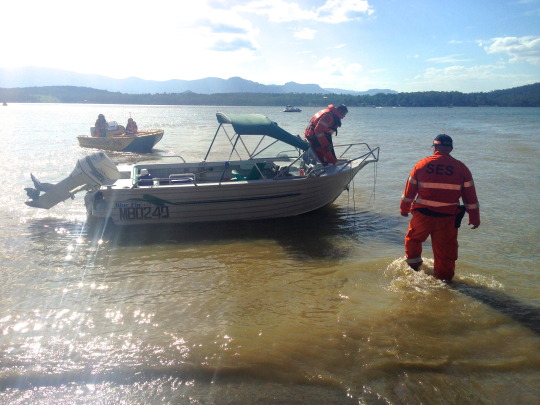

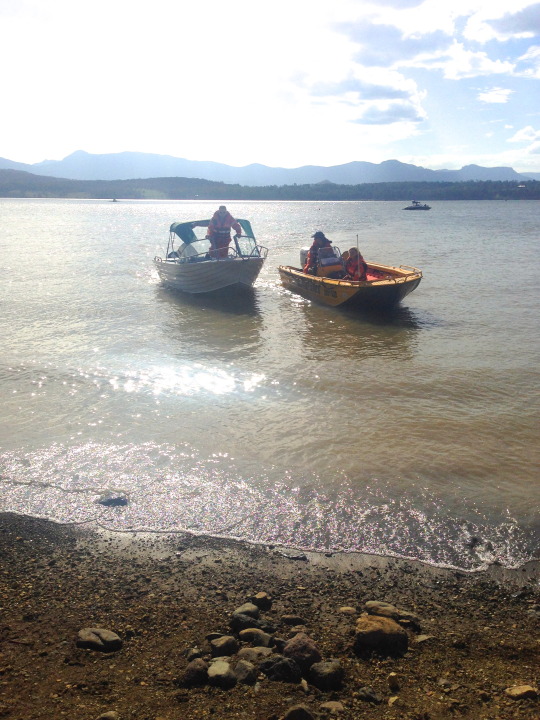
SES search for missing boat and fishermen at Moogerah Dam
0 notes
Text
Pongamia - Natures problem solver?
Pongamia Pinnata may just look like a pretty tree with its pink and white flowers but its seeds may hold the key to fueling diesel engines all around the country. It also has the potential to fueling the starving bodies of livestock in drought stricken regions across the country.
Currently Central and Western Queensland are facing some of the toughest conditions they have experienced. Graziers across the state are walking off their land in despair. Its dry and its for the ones that are sticking it out, its tough. While the memories of what felt like all of Queensland being underwater are still fresh in the minds of many, 65 per cent of the Sunshine State is officially drought declared.
Its tough not just on the animals, some of which have been shot by graziers who have no other humane option with no food available and no money to buy feed but its tough on the people too. Cattle and other livestock are not the only lives lost in these regions in recent months. The drought has also claimed the lives of several farmers and farm workers. At least 16 suicides in northwest Queensland have been linked to drought, including quite tragically, that of a sixteen-year-old boy. Another farmer is believed to have killed himself after being told that his cattle due to the toll of the drought were in no condition for sale. He put the cattle out of their misery first and then himself.
What if they end to this is in the seed of the Pongamia tree? The end to the pain and the suffering in Queensland’s drought stricken regions may not come in the form of the rain the region needs and craves, but in the form of feed from the Pongamia seed.
While the feed, which is a by-product of the oil production is not yet commercially available in Australia; the high level of protein in the feed makes it suitable feed. While cattle across Queensland continue to starve and farmers continue to suffer in silence, Pongamia Plantations reaching maturity across the country may just bring them hope.
0 notes
Text
Can science and social media be friends?
These networks do not just connect us to our family; friends and colleagues today social media has the ability to connect us to a wide range of people from celebrities to professionals and experts.
Despite our obvious reliance on social media for networking and information only 13 per cent of scientists use blogs and social media as a means of communicating with other scientists and the public.
Vanessa Hill, a speaker at the 2014 Australian Science Communicators conference told the audience that ‘there are some people who are really enthusiastic to use social media to communicate but the bulk of people aren’t.’
With the conference focusing on the importance of effectively communicating science is social media a good form of communication for scientists?
Sarah Keenihan is one scientist who believes in the positive role which social media and blogs can play in science communication. She recently completed a yearlong project where she wrote a blog post everyday reflecting on science and how it tied in with other broader events that occurred during the year. She reflected on this at the conference saying that ‘blogging, for me is definitely not a dirty word.’
For some scientists however blogs and social media do remain a ‘dirty word.’ There remains the view these platforms do not provide the same trust and credibility as traditional news sources do. In fact in a debate over whether social media was a hero or villain in science at the conference social media was decided to be a villain.
The rotational twitter account @realscientists is one example where science and social media are effectively working together. The account is helping scientists communicate their findings to both other scientists and the general public with great interest. On its first birthday this month, the account almost had 10,000 followers and had made more than 24,000 tweets. Everyone from scientists to science communicators, policy makers and artists have treated the accounts followers to an insight into their involvement with science.
Whether there is a place for social media in communicating science effectively is something that only time will tell.
0 notes
Text
The importance of science recognised at ASC2014
Professor Lowe, a leading Australian scientist, asked the audience where they would be without science. I looked around the audience to notice many people live-tweeting the conference courtesy of CSIRO’s free WIFI, others were checking their emails or checking in on Facebook and some were just listening to Lowe and reading his slides. It was there in that moment that I realised just how different moments like that would be without science. Why is it then that we don’t appreciate or perhaps even understand the important role that science plays in our day-to-day lives?
When looking at a list of things science has brought us since the 1950s I realised today we take most of those things for granted. Science has given us everything from airbags in cars, text messaging and the internet things which we can’t imagine our lives without to things like at home kidney dialysis, IVF and synthetic human insulin breakthroughs which some people literally owe their lives to.
Lowe reflected on his own life during his address. Self described as ‘the oldest serious outswing bowler in Queensland’ he is currently a member of Australia’s over 70’s cricket team which will tour England this year. Quite a feat for a mean who admitted in his speech if it wasn’t for scientific breakthroughs he may not have even have reached his seventies let alone still be fit and able bodied enough to be playing cricket. Advances in health and the human condition are certainly a win for science but we seem to better remember the times where science has not quite hit scored a bull’s eye.
Instead of focusing on the good that science does we often spend too long being sceptical of science or vocalising its failures.
Scientists may have got it wrong before but that does not mean that we should not trust them. Sure scientists may not have predicted the impact of nuclear energy on places like Chernobyl, The Mile Island and more recently Fukushima but we have to remember that scientists, just like everyone of us, do not always get it right. The great thing about science though is that they are always working to further what we already know, even if it is contrary to an older scientific finding.
There are also times when science has gotten it right, long before any of us were ready to listen. Times when we were too busy listening to the media and popular opinion to care about the scientific findings. Fifty years ago General Luther Terry told the world of the dangers of smoking. Even in 1910 scientists were studying the impact of smoking and nicotine however it is only in recent years that we have started to see real change. Watch any movie or television show even from the nineties and you are likely to seeing someone smoking. Go to many European or Asian countries and people will still be lighting up. Alarmingly all you have to do is go to a teenage party or drive past a pub or club on a Friday night to see that young people are still taking up smoking. It is not science’s fault that people continue to die of lung cancer and other smoking related diseases when they have been trying to warn people of the impact for years.
Changes in attitude do not happen over night and science cannot changes the minds of people on its own. Perhaps smoking is a lesson that we should listen to science when we have the opportunity to make a change. Climate change is one such issue where we still have the chance to make a difference. While we are spun the stories of climate change denial by popular media it is people like Professor Lowe who are experts on climate change that we should really be listening to. After all as the saying goes, ‘the proof is in the pudding.’ The sea levels are rising, the temperatures are increasing and ice is melting, climate change is not something we can deny any longer, just like science is not something that we should distrust any longer.
0 notes
Text
Pongamia Project goals
1) Establish your goals
- To establish an understanding amongst the wider public about the important role in which diesel plays in the running of our day to day lives. While most people don’t directly come into contact with diesel everyday, the fuel indirectly impacts almost all of us daily. Used to fuel trucks and machinery and to make aviation fuel, diesel is more common than we realize. This is why it is important to introduce the broader public to the idea of using the oil extracted from Pongamia pods as a biodiesel. The support, recognition and understanding of the general public is needed so that the Pongamia Project can be strong enough to gain some support from Australia’s major political parties.
- To create an audience that is accurately informed about the use of Pongamia as a bio-fuel. It is important, especially with the nature of social media that the content is produced in a manner that can be easily and accurately interpreted by the audience. This means that it is especially important for everyone involved in the campaign to ensure that they have a solid understanding in the process.
- To communicate the importance of Pongamia legumes being used as a bio-diesel. Australia currently uses 18 billion litres of diesel a year and our reliance on importing this from other countries is only expected to rise between now and 2030. Pongamia bio-diesel will help cut down the amount of diesel which Australia has to import
- To give the public an understanding of the benefits of Pongamia legumes being used to create diesel. Pongamia bio-fuel has environmental benefits including the reduction of greenhouse gases associated with fossil fuels and first generation bio-fuels as well as providing a use for the vast amount of land in Australia that is currently unusable.
-
2) Identify all key dates during your campaign
- With the open day which was initially scheduled for January 27th being postponed there are no key dates, however the campaign will work towards gathering interest in The Pongamia Project ahead of the open day which is likely to be scheduled at the end of April.
3) Campaigns and Strategies
The campaign will exist across several social media platforms including Facebook, Twitter, Instagram and YouTube as well as a blog.
- Facebook will serve as the main source of information and main point of contact for the public. This will mean that Facebook will be used to link the public to information available on other sources such as YouTube and the blog. Facebook will also be used to connect with supporters of bio-fuels by approaching their pages and groups in order to create a larger audience. At this stage I am also hoping to have a Facebook campaign “Fun Fact Friday” which will aim to communicate information with Facebook followers about Pongamia, its uses and the aims of The Pongamia Project.
- Twitter will be used as an instant source of information and communication for the public. Updated more frequently than Facebook (which will be updated no more than once daily) Twitter will allow for communication and conversation with those who are interested in the benefits of The Pongamia Project. The nature of Twitter will allow for more updates than Facebook, however the information which is shared cannot be as in-depth due to the character limit of Twitter, so it will be important to make sure the facts are accurately communicated.
- Instagram will be used to share photos relating to The Pongamia project and to familiarize followers with the appearance of Pongamia trees so that they can realize just how common they are. Instagram will also be used for a campaign which will get followers involved in finding, posting and hashtagging of Pongamia trees they see in their day-to-day life. Instagram will also be a good place to share infographics that will be created on the usage of diesel in Australia as well as the benefits of bio-fuels.
- YouTube will be used to publish the videos previously created by communication students at The University of Queensland.
4) Gather sources for your content repository
Sources of content for the campaign currently include the information already available on the blog, the photos and videos (both raw video and short videos made about the uses of Pongamia), which have been compiled, the blog and other facts and figures available from those involved in the project. During my time working on the project, I hope to create other sources including infographics and blog posts, which can be used to give the public a wider understanding of The Pongamia Project. My idea for the blog posts is to give people an understanding from the perspective of someone who has only recently found out about the project. I also hope to collate a large depository of content that can be used at a later date. This will include Facebook statuses, Instagram photos and blog posts which can be instantly posted at a later date.
0 notes
Audio
These are the voices of the live export industry, an industry which has long divided the opinions of Australians. Angela Gee brings to you the struggles of those involved in live export.
Album art photo: www.liveexportcare.com.au
0 notes
Text
The next generation of farmers

For most Australians turning 65 represents the start of the glorious years of retirement. Despite this, almost one quarter of Australian farmers are aged over 65. A lack of youth in the agricultural industry is one of the biggest problems currently facing Australian agriculture.
Agriculture is important to Australia and the Australian economy. In 2010-2011 Australian farms contributed $48.7 billion to our economy.
There is currently a push amongst those involved in the industry to encourage youth to see agriculture as a viable career option with those in the industry seeing youth as the key to the future of Agriculture.
Former chair of the New South Wales Young Farmers Council Hollie Baillieu said youth are important to farming and agriculture.
“I think that young people sort of give a new energy, a new very fresh sort of look on things.”
The important role that youth play in agriculture has been recognised internationally. In 2008 Director Sarah Wray and her husband launched FarmOn in Canada.
FarmOn is now a global campaign that aims to help more young farmers pursue their passion. Canada was facing a similar situation to Australia with only 9.1 per cent of farmers under the age of 35 when FarmOn was launched.
“Young people are so important, as you start to get new ideas, we start to have that enthusiasm put into the industry where maybe as you start to get towards the end of your farming career it is a little harder to see that,” she said.
Ms Wray said that the passion that young people bring to industry is important.
“A lot of what we have actually been hearing from consumers has been about why do we care if young people are in agriculture if we have full bellies does it really make a difference? And I think that the young people that we have met along the way with farming, particularly those ones who have farmed already or as a family unit, or are moving forward in terms of new entrants coming into it, there’s a certain passion and a certain commitment to farming in a way that is not only about profit-at-all costs but also doing what is right with farming.”
While the industry benefits by FarmOn helping youth to get involved in agriculture Ms Wray said that the young people involved in FarmOn also benefit.
“It is a way for us to start to break down the barriers and begin to have young people join together and actually start to find solutions along the way.”
In Australia the program Art4Agricutlure was launched to help connect young Australian farmers and to encourage them to connect with other young Australians from a non-agricultural background in an attempt to build a link between farmers and consumers.
National Program Director of Art4Agriculture, Lynne Strong said that there are still many young Australians who are keen to pursue careers in the agricultural industry.
“The statistics that you hear out there are that the average age of farmers is 59…We want to show that there are lots of exciting young people who do certainly see farming as exciting.”
Ms Baillieu was involved in the program as a Young Farming Champion.
“A lot of people in the industry don’t tell their story very much and I think it (Art4Agriculture) is a really good way to get a point across. That this industry is import, that it affects us three meals a day, three times a day, every day…The Art4Ag program was fantastic.”
Not all young Australians are able to pursue their passion for agriculture like Ms Baillieu. In 2011 those aged between 15 and 24 only accounted for two per cent of our farmers.
According to the Australian Bureau of Statistics young Australians are more likely to leave regional and rural areas than older Australians. Many leave for better career opportunities or to pursue tertiary study.
Mac Ahern is one young Australian who left his family farm to take up a more secure career opportunity.
Mr Ahern’s family have a sheep and cattle property 30 kilometres west of Muttaburra in central west Queensland. The property, which has been in his family for four generations currently runs 10,000 head of sheep and 1000 head of cattle. His family has run the property for four generations.
Mr Ahern said he left the property at the start of this year and moved to Brisbane where he is currently working as a boilermakers apprentice.
“My father said its good to have something to fall back on whenever times get tough because they do you know. With drought, and stuff like that. It’s something you can go back to and make a bit of money off.”
For Mr Ahern one of the biggest struggles that he faced was the isolation of living in a remote location.
“There’s not too many young people out there or sort of things going on.”
The isolation of living in a rural or remote area can have a significant impact on the mental health of young Australians.
According to a study released last year by Griffith University, young males and farmers living in rural and remote areas are more significantly more likely to commit suicide than the general population.
Despite the isolation, Mr Ahern is still passionate about farming and hopes to return to his family property.
“It’s what I’ve always wanted to do, I’ve always enjoyed it,” he said.
“I definitely see myself returning’
“I miss the peace and the quietness and the country and its not so go-go-go like it is down here.”
The lack of youth in agriculture is not just being seen on our farms but the agricultural industry as a whole. Across the country last year, 700 fewer students graduated with a Bachelor of Agricultural Science than 2011.
While enrolment numbers are still strong at the University of Queensland, which is the only Queensland based university to offer the Bachelor of Agricultural Science; the story is different across the country.
In the last decade the number of universities offering the degree has fallen from 15 to seven.
Ms. Baillieu who recently graduated with a Bachelor of Agricultural Science from Charles Sturt University said the degree has opened up a wide range of career opportunities for her.
“I think that what the message needs to be is that ag is not just farming, it’s every other industry, every other service industry that goes along with it. I’m looking at going overseas in a few years time and to work overseas, there are so many different avenues that you can take with this industry and that is something that is really exciting.”
As Australia’s current farmers and agricultural workers continue to age, it is more important than ever for youth to see a career in agriculture as exciting with the government setting a target to double the value of Australia’s agricultural production by 2040.
Minister for Agriculture, Fisheries and Forestry Senator Joe Ludwig said that more needs to be done so young Australians see agriculture as an attractive career opportunity.
“Australia is lucky to have a strong and diverse agricultural sector and some of the world’s most productive and innovative farmers but we need to work together and make a career in agriculture an appealing option for young people.”
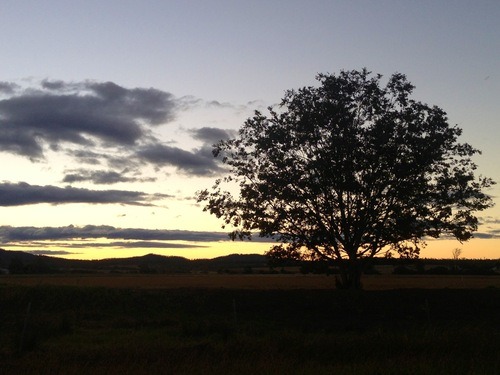
Isolation is a major factor for youth leaving rural and remote areas. It is also associated with higher than average levels of suicide amongst young males living in rural and remote areas.
0 notes
Audio
The Australian agricultural industry is in crisis as the average age of workers is amongst the highest of any Australian industry. Angela Gee reports
0 notes
Text
Learning together to close the gap

While the findings by the Australian Bureau of Statistics in the last census look bleak for indigenous Australians, there is a hope that with better education these gaps can be closed.
In 2008 the Council of Australian Governments (COAG) identified education as important to helping close the gap in other areas of indigenous life.
By 2018 COAG hopes to halve the gap between indigenous and non-indigenous achievements in reading, writing and numeracy standards. They also hope halve the gap between the number of indigenous and non-indigenous Australians completing school by 2020.
The government isn’t tackling the indigenous education problem alone. Instead they’re fighting the battle with the help of other Australians from all walks of life. From indigenous National Rugby League superstar Johnathan Thurston to university students across the country, Australians are stepping up to help achieve equality.
Thurston’s indigenous heritage is something that he is passionate about. He wears this passion on field sporting his signature boots and headgear in the colour of the Aboriginal flag.
He also wears this passion off field. Thurston is currently involved in Learn, Earn, Legend and ARTIE. Both programs provide support to indigenous students and encouragement to finish school.
ARTIE (Achieving Results Through Education) is a program run by Former Origin Greats (FOGS) and named after rugby league legend Arthur Beetson.
FOGS spokesperson, Hayley Camman said, “The ARTIE academy is underpinned by three progressively related themes – Inspire, Encourage and Succeed.”
Students involved in the ARTIE program are inspired to make positive changes in their schooling through interaction with rugby league players and encouragement from ARTIE staff.
It is players like Thurston who are inspiring and encouraging young indigenous Australians to succeed. He has been involved in the program since February 2007.
The program currently runs in 21 schools across Queensland and is set to expand to the Townsville region where Thurston and the North Queensland Cowboys are based.
“They are launching the program at two Townsville schools (Kirwan State High and Rasmussen State Primary School) later this year and I will be heavily involved in those” Thurston said.
According to Ms Camman the program is achieving success. At one school in the Logan region indigenous students now have a higher attendance rate than non-indigenous students.
“Students involved…achieved an increase of 5% across all areas of the ‘Closing the Gap’ criteria from Term 1 to Term 4 in 2011,” she said.
The ‘Closing the Gap’ criteria include improvement in the students academic achievement and attendance.
Thurston believes that these small differences are helping to close the gap. “I believe that education is the key to closing the gap and I definitely think that through the ARTIE program we will reach and connect with the majority of participating students.”
Jack Manning-Bancroft also set out to reach and connect with other young indigenous Australian’s when he established AIME (Australian Indigenous Mentoring Experience) as a 19-year-old at Sydney University in 2005.
The mentoring program brings together indigenous high school students and university students across the country.
AIME Communications Director Alison Dunn was a mentor during her time at Sydney University. “I became involved as a mentor in 2007. The program was quite young at the time.”
As a mentor Ms Dunn got to engage with young indigenous Australians though sport, art and drama. “I thought it just made sense,” she said.
Since her time as a mentor the program has expanded to include over 1000 mentors and 2000 mentees.
“That’s across five states, Queensland, New South Wales, Victoria, Western Australia and South Australia and there is 24 university sites,” Ms Dunn said.
The program runs at five Queensland universities including Bond, The University of Queensland and the University of the Sunshine Coast.
This expansion is due to the programs success. In 2011 62.7 per cent of students involved in AIME since grade nine completed grade 12. Only 32 per cent of indigenous students who weren’t involved in AIME progressed from grade nine to grade 12.
All students who finished school after being involved in the AIME program went on to either be employed or undertake further education and training.
Ms. Dunn believes that data in the annual report due to be released in late April shows 2012 as another successful year for AIME.
“It’s the fourth year running that AIME students are finishing school at almost the same rate as every Australian child. They’re really approaching that national non-indigenous average.”
Not only are the students involved approaching the non-indigenous averages, but programs like AIME and ARTIE are helping them fulfill the goals set out by COAG.
This success has been recognized with both programs now receiving government funding.
While there is still a long way to go in closing the gap in indigenous education, programs like AIME and ARTIE are showing that it can be done.
Thurston believes that ‘every small change makes a difference’ and AIME and ARTIE are proof of this.
0 notes
